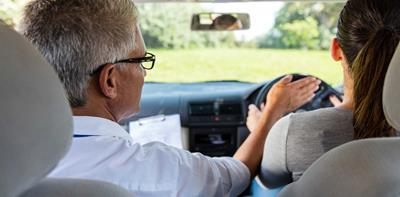
Car insurance for young drivers can be pricey, as they’re statistically more likely to be involved in an accident and are seen as a higher risk by insurance companies.
However, there are a few tips and tricks that could help reduce the price of car insurance for your children.
Choose the right car
A bigger, more powerful car is going to cost more to insure. If the car you’re planning to get insured is your own, and you’re not prepared to downgrade, then bear in mind that this is going to affect the cost of cover.
But if you’re choosing a car for the beginning of someone else’s motoring adventure, then getting something smaller and more sensible for starters is the way forward. You may also want to check out the car’s insurance group before you buy. The lower the group, the cheaper it tends to be to insure.
Getting a small, sensible car may not be your child’s cup of tea. But it makes sense to drive an entry-level car for the first few years of motoring, as this is when they’re most likely to have an incident.
Get the right type of insurance cover
If you’re getting lumped with the paperwork, it’s important to carefully consider the right type of insurance policy for a young driver.
Fully comprehensive insurance offers the highest level of cover there is including liability to a third party, fire and theft. It also covers damage to your vehicle and personal injury costs. A comprehensive policy could be particularly suitable if you or your child would struggle to replace their car if it was written off in an accident.
You may also choose third party insurance, which is the minimum level of cover required by law. Third party insurance covers legal liability to pay damages to someone else (a 'third party') for injury to them, their passengers and their property. But, you or your child would have to foot the bill for repairs or a replacement if your own car is damaged or stolen.
Don't assume that 'third party' cover will be cheaper than a comprehensive policy, as that's often not the case.
Pay a higher excess
The excess is the cost you’re willing to shoulder in the event of a claim. This is split into two parts: compulsory excess, which is set by your insurer; and voluntary excess, which is set by you. If you’re willing to take on a higher voluntary excess, you’re likely to be rewarded with cheaper premiums.
However, you need to bear in mind that the higher the excess you take on, the more costly it’ll be if you do have to make a claim. For this reason, you should never set your excess at a level you can’t afford to pay if things go wrong.
Have a parent or other experienced driver on the policy
If you’ve got a long, claim-free motoring history, then adding yourself as a named driver on your child’s policy can be a good way of driving down costs.
This is because the car will be used occasionally by a responsible driver with a proven track record.
When considering this option, it’s essential to be honest, though. When cars are shared, the main driver on the policy should always be the one who drives the vehicle more often. If the main driver isn’t the one who uses the car most, you could be found guilty of ‘fronting’, which is a type of insurance fraud.
Consider a telematics policy
Telematics or black box insurance policies use GPS technology to effectively monitor a policyholder’s driving.
Telematics policies rate the driver on their individual driving ability. So, if they’re a safe and steady driver, this will often lead to a lower insurance premium.
Some companies may even offer a discount for choosing a telematics policy in the first place. You can find out more about how telematics policies work here.
Getting the right cover at the right price is an important step to make sure young drivers get off to a good start for their driving adventures.
No £25 admin fee
When you update your policy online, e.g. amend driver, address or car details.


